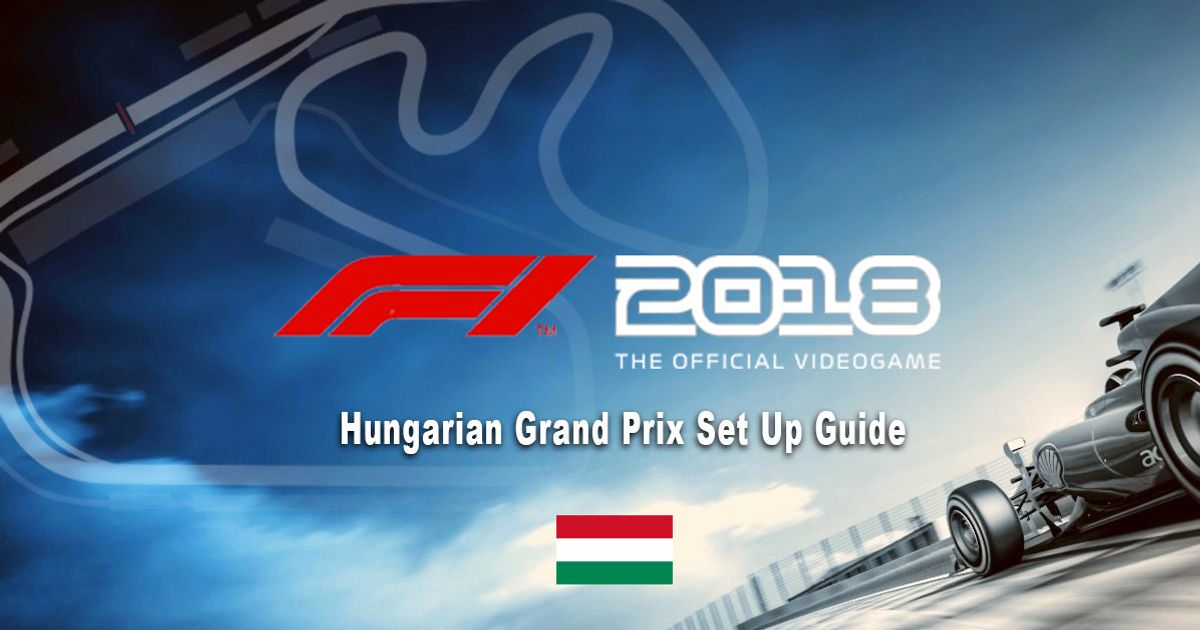Hungary can be one of the most frustrating tracks in F1. It's all corners and requires a lot of precise braking and cornering. It's a narrow track that makes overtaking tricky and has an awkward downhill braking zone into turn 1 that can easily cause a lockup. With little run-off room and next to no chance for clean overtakes, you need to qualify well and look after your tyres in Hungary. You can do the latter if you take care and not out-brake yourself and corner gently, but how can you get the most out of qualifying with your setup?
Aerodynamics
We have added a lot of downforce here with an 8-8 set up to our wings. It's not quite Monaco levels, but it is very much necessary. There are five 180-degree corners, a sharp chicane, and a sweeping series of esses in the middle sector. We need downforce for all of it, so don't skimp on the wing.
Transmission
This part of the setup is all about how we get the power out of the engine, through the rear tyres, and into the tarmac. The only place that traction is really vital is out of the last corner. The pit straight is the longest full-throttle blast of the lap, and it leads to the heaviest braking zone and only real overtaking point. If you don't get a good exit, then you'll be vulnerable from behind and really struggle to get past anyone. However, with all the corners and curved acceleration zones, we don't want to lock up the on-throttle differential too much. An 84 percent setting gives us good drive out of the final corner while not taxing the tyres too much.
We have a 74 percent off-throttle differential to allow the tyres to rotate more freely on turn-in, helping us get into the corners.
Suspension Geometry
This part describes the way the tyres are aligned to the body of the car. Camber is the vertical alignment, and all F1 cars are set with negative camber, meaning the top of the tyre is closer to the car than the bottom. This creates more cornering grip, and we are adding more negative camber to get us through the middle sector quicker and help us get around all these long corners faster.
Toe describes the horizontal alignment of the tyres. Front tyres are always set to toe-out, meaning the front edge is further away than the back edge. This helps with responsiveness, and so we are adding a touch more toe to the front tyres. We can't add too much as it will hurt our top speed and really wear the tyres.
The rear tyres are aligned the other way with toe-in, so the front edge is closer than the rear. This aids straight line speed and stability, so we have to counter the front toe with more on the rear. Again this adds tyre wear so we can't add too much, but it will help us remain competitive down the pit straight, so we are willing to sacrifice some wear.
Suspension
This is all about weight transfer. Stiffer suspension leads to more responsiveness, which is why we have taken the front suspension up to 8. However, we have softened the rear suspension to allow the weight to shift rearward under acceleration and improve traction.
We have gone with the same 8-4 set up for the anti-roll bars. This gives us a really responsive front end that can dart into corners, but by allowing weight to roll laterally at the back it keeps good traction on the rear tyre as we accelerate through corners.
Brakes
Stopping into the first corner is the big priority, but as it is downhill the risk of lockups goes up. We have set the brake pressure to 86 percent to help us stop, but any more and the risk of lockups becomes too much.
The brake bias is about which tyres do the most braking. The normal setting is 60 percent, but by moving it rearward to 58 percent we have created some added oversteer to help us get the nose into the corners.
Tyres
We have played with the tyre pressures a little in this setup. We've added a click of pressure to the front tyres to reduce their rolling resistance in a straight line and improves their responsiveness at turn-in. It does up their temperature and thus wear, but we need that responsiveness to get a good qualifying time.
On the rears we have taken a click of pressure away, this increases their contact patch with the tarmac and thus their traction.
Weight Distribution
We have moved the ballast rearward a touch to 7, this creates a bit more oversteer as well as improving traction once again to help us get out of the slow corners and get on our way out of the final corner.
So there is our setup for the Hungarian Grand Prix. It's all about responsiveness, downforce, and direction-change. The Hungaroring is a challenge for drivers and requires a lot of patience to get right. You will have to wait an age to get the power down around some of these corners, but the grip is there to get your foot down and head into the next horribly slow corner. See you on the time sheets!
Hungarian Grand Prix Wet Lap Setup
Front Wing: 7
Rear Wing: 9
On Throttle: 65%
Off Throttle: 100%
Front Camber: -3.10
Rear Camber: -1.60
Front Toe: 0.11
Rear Toe: 0.41
Front Suspension: 5
Rear Suspension: 3
Front Anti-Roll Bar: 9
Rear Anti-Roll Bar: 7
Front Ride Height: 4
Rear Ride Height: 4
Brake Pressure: 85%
Front Brake Bias: 56%
Front Tyre Pressure: 23.4 psi
Rear Tyre Pressure: 21.1 psi
Ballast: 7
Explore new topics and discover content that's right for you!
F1




